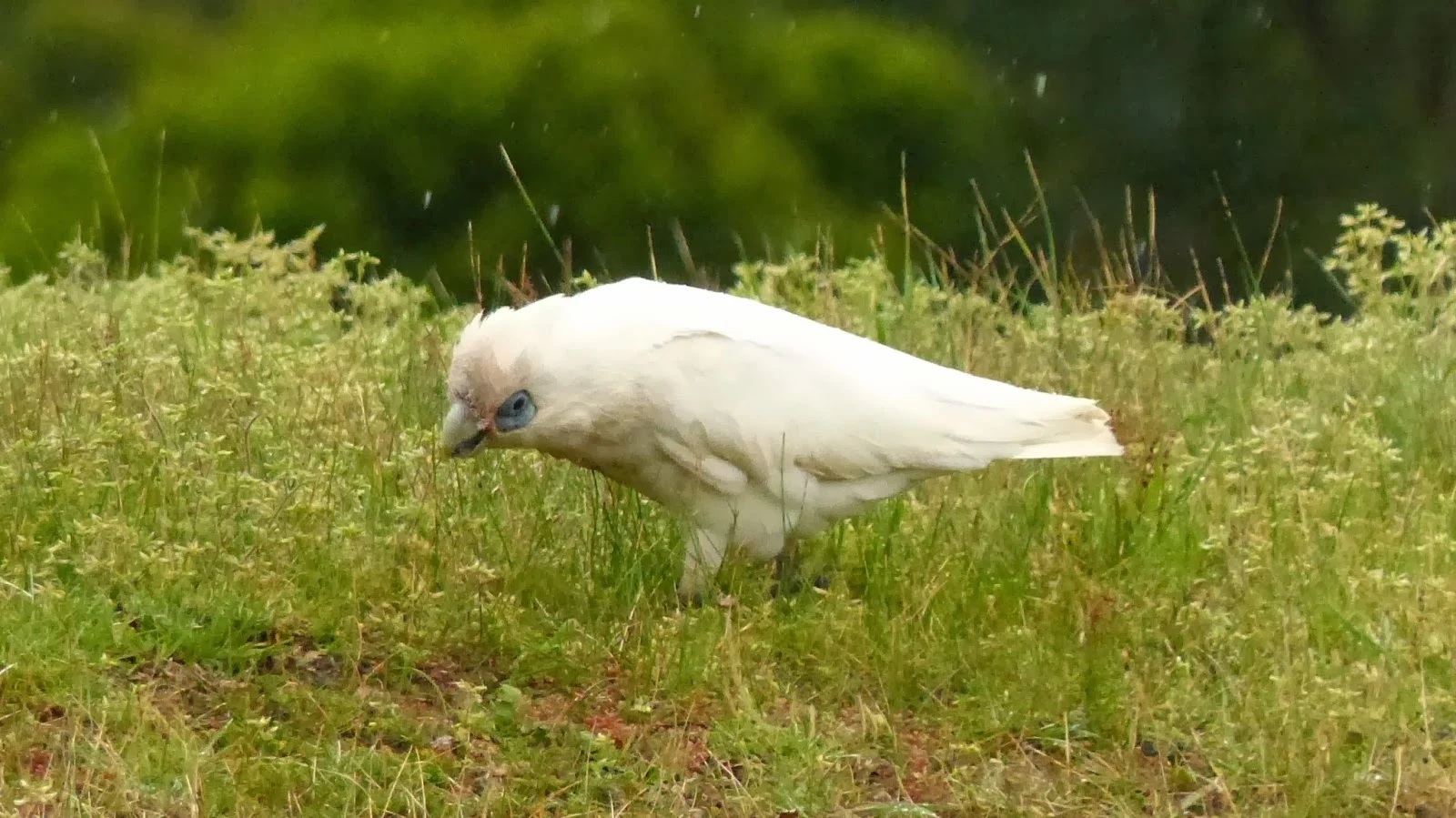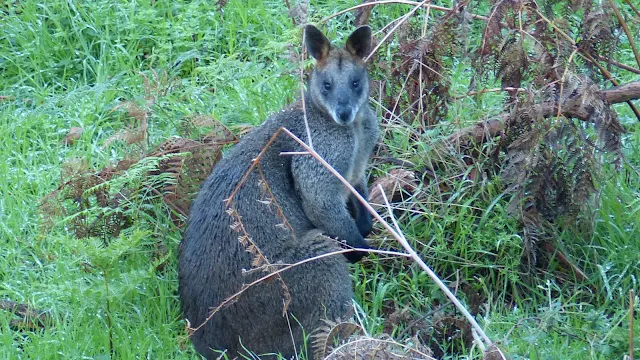One afternoon, Janet and I were poncing about the property, checking out the plants, when Janet noticed a couple of wallabies fighting.
We've witnessed kangaroos boxing...........a lot. In fact, it's obvious that the prime objective of a male kangaroo is to become the Alpha male. From a very early age, the males like to fight anything and everything - other joeys, mum, branches and twigs, even the fresh air. Often using their tail for support and lashing out with their hind legs, kicking out at the opponents underbelly. They continually challenge each other to develop skills, and to assess the strength and abilities of other males within the mob. Consequently, a day doesn't go past without witnessing some boxing activities. On the other hand, the females appear sensible, measured and in most instances, are extremely attentive mothers - watching the males to identify those with the strongest and most dominant genes.
Wallabies are essentially solitary. Going about their day alone. From time to time, we see a couple grazing in the same area, usually in the gully, but it appears to be either a male and female courting or a catch-up between neighbours, rather than a family unit or mob.

On this particular occasion, two (2) wallabies were wrestling each other. Trying to roll the opponent to the ground and pin the other down. There was no kicking out with their hind legs and they were totally focused on each other, and totally ignorant of our presence. Initially, they were about 20 metres (60ft) away, so we sat down to witness the event and as time passed and the two continued to wrestle, they moved closer and closer until Janet and I felt uncomfortably close. Like I mean about 3 or 4 metres (9~12ft). So we yelled to let them know we were there. They stopped for a moment, looked at us and then resumed wrestling. They continued to edge closer so we yelled again. This time they stopped briefly before one of the wallabies ambled away, with the other chasing him down. Not in a hurry, but in a controlled manner - much like a human would walk tall and fluffed up with adrenalin pumping through the veins after a fight or conflict. We expect their issue was regarding territory, and we're not sure what happened after they disappeared into the scrub, but it was an amazing and very different experience.
The attached images are of a local Black Wallaby (Wallabia bicolour) and may be one of the wrestling wallabies, but we can't be sure. The Black Wallaby is also known as the Swamp Wallaby, Black-tail Wallaby or Fern Wallaby.
A worthwhile site for gleaning more knowledge is :
Enjoy!!


















































